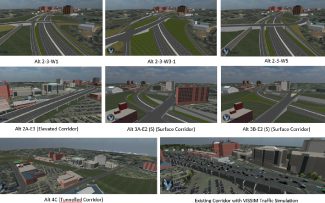January 10, 2017 Project of the Week

Project Name: Elmhurst Community Library
Company Name: Designed by Marpillero Pollak Architects and Built by Stalco Construction
Project Location: Queens, New York United States
Project Information/Details: The 32,000-square-foot, terra cotta-clad structure with two large, protruding glass cubes was designed and built to meet LEED Silver standards. It houses four, fully accessible levels for library service, separate adult, teen and children’s library sections, an adult learner center on its own level, 24/7 book return, an early learning center with a play kitchen, a large international collection with materials in nine languages and an English language collection with 27,000 items for adults, 28,000 items for children and young adults and nearly 15,000 multimedia items. The new building replaces a 1906 Carnegie library that was half its size and previously stood on the site. The fireplace mantel from its children’s room was moved into the new children’s room and brickwork from its façade surround the foyer of the Broadway entrance. The structure features two green roofs, 13,000 square feet of outdoor space, and a Percent for Art art installation by the artist Allan McCollum comprised of 955 similar, yet distinct shapes cut from Grey Elm veneer plywood. In addition to Stalco and Marpillero Pollak, the project team included structural engineer Severud Associates, MEP engineer ads Engineers, lighting designer See/Arch, and landscape architect Wallace Roberts & Todd.
January 03, 2017 Project of the Week

Project Name: I-84 Hartford Viaduct Replacement Study
Company Name: Connecticut DOT, TranSystems, Inc. and RDV Systems
Project Location: Hartford, Connecticut United States
Project Information/Details: The I-84 Hartford viaduct replacement study has been described as the highest dollar value project currently in planning and design in the USA. The project covers a segment of I-84 that starts in downtown Hartford, Conn. and runs west for nearly four miles through densely populated urban areas on raised viaducts that were built in the mid-1960’s. The purpose of the I-84 Hartford Project is to address the highway’s structural deficiencies, improve traffic operations and safety, and improve mobility, all while maintaining access for the City of Hartford and adjacent communities. At the same time, the I-84 Hartford Project strives to reduce the highway’s adverse impact and footprint on the city, while integrating it more closely into the regional multimodal and interstate transportation system, both existing and planned. In addition, the redesign of the I-84 mainline takes into consideration the City of Hartford’s economic development and urban design goals, and intends to be consistent with the State of Connecticut’s goals of energy efficiency and responsible growth. The DOT envisioned a rebuilt I-84 that successfully does the following: • Accommodates the traffic demand more safely and efficiently than existing highway • Promotes greater mobility by facilitating connections with other modes • Adheres to ‘Complete Streets’ practices that emphasize safety and accommodation of all users regardless of age or ability • Provides additional economic development opportunities • Facilitates goods movement into and through the corridor • Minimizes the impact and barriers to the communities through which it passes • Is implementable and embraced by many
December 20, 2016 Project of the Week

Project Name: The AlexRenew Nutrient Management Facility
Company Name: Alexandria Renew Enterprises
Project Location: Washington, District of Columbia United States
Project Information/Details: The Nutrient Management Facility, owned by Alexandria Renew Enterprises (AlexRenew), recently earned the first Envision Platinum certification from the Institute for Sustainable Infrastructure (ISI) in the Washington DC/Virginia metro region. The Envision rating system provides a holistic framework for evaluating and rating the environmental, community, and economic benefits of large infrastructure projects that incorporate sustainability throughout the project lifecycle. The AlexRenew Nutrient Management Facility, an 18-million-gallon storage facility topped with a public athletic field, stores wastewater during nutrient peaks to balance the amount of nitrogen that goes into biological treatment processes. The Nutrient Management Facility is the largest project under AlexRenew’s $160-million State-of-the-Art Nitrogen Upgrade Program, the utility’s response to regulations limiting the amount of nutrients water resource recovery facilities can release into the Chesapeake Bay watershed.


